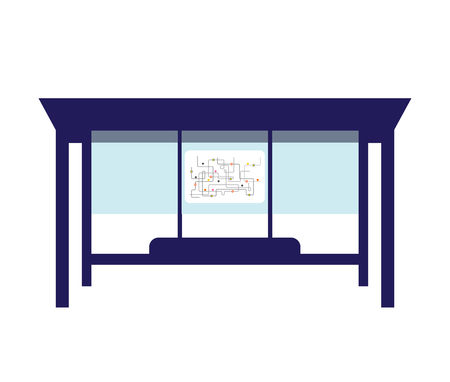Introduction: Aligning Tradition with Sustainability
In the evolving landscape of American office design, two seemingly distinct philosophies—ancient Chinese Feng Shui and modern sustainability standards like LEED certification—are converging in innovative ways. As more companies prioritize environmental responsibility and employee well-being, integrating Feng Shui with eco-friendly practices is gaining traction across the United States. While Feng Shui has its roots in thousands of years of tradition, focusing on harmony and energy flow within spaces, LEED (Leadership in Energy and Environmental Design) represents the gold standard for green building certifications. This article explores how these ancient principles can complement today’s push toward sustainable, health-conscious work environments, demonstrating that tradition and technology are not mutually exclusive but can reinforce each other. By aligning the wisdom of Feng Shui with American values around environmental stewardship, organizations can create workspaces that support both planetary health and human productivity.
2. Fundamentals of Feng Shui in the Workplace
To successfully adapt Feng Shui principles within LEED-certified and eco-friendly American workspaces, it’s crucial to grasp the core concepts that drive this ancient practice. At its foundation, Feng Shui emphasizes the harmonization of individuals with their environment through three main pillars: flow, balance, and energy mapping. Integrating these concepts in a modern U.S. office setting not only supports employee well-being but also aligns with sustainable design values.
Understanding Flow: The Qi (Energy) Pathways
Qi, or vital energy, must move freely throughout a workspace for occupants to thrive. In American offices, this translates to unobstructed pathways, thoughtfully arranged desks, and clear entryways that invite positive energy in and allow it to circulate. Avoiding clutter—especially near entrances or high-traffic zones—mirrors both Feng Shui wisdom and LEED guidelines focused on open, flexible layouts.
Table 1: Flow Optimization Strategies
| Feng Shui Principle | LEED/Eco-Friendly Application | American Workplace Example |
|---|---|---|
| Clear Entrances | Encourage natural light & unobstructed doors | Glass doors with minimal signage clutter |
| Open Pathways | Flexible furniture for easy movement | Modular desks allowing adaptable configurations |
| No Clutter Zones | Minimalist design ethos; clean desk policies | Cubicles with hidden storage solutions |
Balancing Elements: Yin-Yang and Five Elements Theory
Balance is achieved by integrating both yin (calm, restorative) and yang (active, stimulating) energies. In practical terms, this means creating spaces that support focus while also energizing creativity—a key concern in American collaborative cultures. The Five Elements (wood, fire, earth, metal, water) can be represented through color schemes, materials selection, and biophilic features that also meet eco-friendly criteria.
Table 2: Balancing Elements with Sustainable Materials
| Element | Sustainable Material/Feature | Cultural Fit Example (U.S.) |
|---|---|---|
| Wood | Bamboo flooring, recycled wood desks | Open-plan offices with reclaimed timber accents |
| Fire | Naturally lit spaces; LED lighting options | Break rooms with skylights or sun tubes |
| Earth | Potted plants; earth-tone paints (low-VOC) | Lounge areas with terracotta planters and green walls |
| Metal | Recycled steel fixtures; modular shelving units | Sleek metallic hardware in communal kitchens or meeting rooms |
| Water | Indoor fountains; water-efficient fixtures (LEED-compliant) | Lobbies featuring water walls or bottle-filling stations |
The Energy Map: Applying the Bagua Grid to American Offices
The Bagua map divides a space into nine sectors corresponding to aspects like career, wealth, relationships, and health. For American workspaces pursuing both LEED certification and productivity gains, overlaying a Bagua grid helps identify zones for improvement—such as boosting the reputation area with award displays or enhancing the health sector with green design elements. This approach dovetails with data-driven workplace optimization strategies popular among U.S. facility managers.
Key Takeaways:
- Flow: Promote open pathways and natural movement by reducing clutter and leveraging flexible layouts.
- Balance: Use sustainable materials to represent all five elements and foster harmony between quiet and dynamic zones.
- Energy Mapping: Strategically enhance each Bagua sector using eco-friendly design choices tailored for American work culture.
This foundational understanding paves the way for integrating Feng Shui into modern, green-certified offices—creating environments where people feel energized yet balanced every day.

3. LEED Certification: Standards and Practices in the U.S.
LEED, which stands for Leadership in Energy and Environmental Design, is a globally recognized green building certification program developed by the U.S. Green Building Council (USGBC). For American offices, achieving LEED certification signifies a deep commitment to sustainability, energy efficiency, and occupant well-being. The certification process evaluates workspaces across several critical criteria, including energy use, water efficiency, indoor environmental quality, materials selection, and site sustainability. Offices aiming for LEED status must implement eco-friendly systems—such as high-efficiency HVAC units, LED lighting, low-flow plumbing fixtures, and sustainable building materials like recycled steel or responsibly sourced wood. Additionally, LEED encourages practices like maximizing natural daylight, improving indoor air quality through advanced filtration systems, and supporting alternative transportation options for employees. Meeting these standards not only reduces environmental impact but also creates healthier, more productive spaces that align with both modern American business values and holistic well-being principles found in Feng Shui. As more companies seek to blend traditional wisdom with forward-thinking design, LEED-certified environments provide a quantifiable framework to ensure eco-friendly intentions are realized throughout every aspect of the workspace.
4. Merging Feng Shui and LEED: Practical Strategies
Successfully integrating Feng Shui principles into LEED-certified and eco-friendly workspaces isn’t just about aesthetic harmony—it’s about merging Eastern wisdom with Western sustainability standards for tangible results. In the American context, actionable strategies can be implemented to enhance both environmental performance and holistic well-being.
Natural Lighting
Maximizing daylight is a core principle in both Feng Shui and LEED guidelines. In Feng Shui, natural light supports positive energy flow (Qi), while LEED rewards daylight optimization for occupant health and reduced energy consumption. Position desks near windows, use glass partitions to distribute sunlight deeper into the workspace, and select window treatments that diffuse harsh glare without blocking vital light.
Air Flow and Quality
Good air circulation is essential for healthy Qi and meets LEED’s Indoor Environmental Quality criteria. Use operable windows where possible, and choose low-VOC paints, adhesives, and finishes to keep indoor air fresh. Plants also serve a dual purpose: they purify air (supporting LEED) and introduce the wood element of Feng Shui for growth and vitality.
Biophilic Design
Biophilic design—incorporating natural elements indoors—aligns with both philosophies. Integrate living walls, indoor gardens, or water features in communal areas to boost productivity and positive energy flow. These features can help achieve LEED points under Sustainable Sites or Innovation credits while harmonizing with Feng Shui’s earth and water elements.
Table: Feng Shui & LEED Synergy Points
| Strategy | Feng Shui Benefit | LEED Credit Area |
|---|---|---|
| Natural Lighting | Enhances Qi; uplifts mood | Daylight & Views (IEQ) |
| Air Flow & Plants | Cleanses space; supports vitality | Low-Emitting Materials (IEQ) |
| Biophilic Elements | Connects to nature; balances energy | Sustainable Sites; Innovation |
| Green Materials | Avoids toxic influences; promotes balance | Materials & Resources (MR) |
Green Materials Selection
Select furniture made from rapidly renewable materials like bamboo or reclaimed wood to satisfy both the sustainable sourcing requirements of LEED and the grounding effect needed in Feng Shui. Choose fabrics dyed with natural pigments to avoid introducing negative energy from toxins.
Pro Tip: Harmonize Color Palettes for Energy Flow & Sustainability
Opt for color palettes that reflect the five elements of Feng Shui—wood, fire, earth, metal, water—and use low-emission paints certified by GREENGUARD or similar U.S.-based standards for maximum eco-friendliness. This approach ensures both energetic balance and compliance with American green building protocols.
5. Cultural Sensitivity: American Perspectives on Feng Shui
In recent years, American attitudes toward Feng Shui have shifted significantly, moving from skepticism and novelty to a more open-minded and data-driven consideration. As sustainability and employee wellness take center stage in the design of LEED-certified and eco-friendly workspaces, organizations are increasingly exploring holistic approaches—Feng Shui included—to optimize productivity and wellbeing. However, cultural sensitivity is crucial when integrating these Eastern principles into diverse corporate settings.
Evolving Perceptions of Feng Shui in the U.S.
Traditionally, many Americans viewed Feng Shui as an exotic or superstitious practice. Today, however, there is growing recognition of its practical benefits, especially when aligned with evidence-based outcomes such as improved air flow, natural lighting, and workspace organization. According to a 2023 survey by the American Society of Interior Designers, nearly 40% of U.S. businesses expressed interest in incorporating wellness-focused design elements—including aspects inspired by Feng Shui—into their offices. This shift reflects broader trends toward multicultural awareness and a desire for spaces that support both environmental responsibility and human health.
Respectful Integration in Diverse Workplaces
Despite growing acceptance, it’s essential to approach Feng Shui with cultural respect. Here are some best practices for American organizations:
1. Educate Without Stereotyping
Offer educational resources that present Feng Shui as a science of spatial optimization rather than mysticism. Highlight its alignment with modern sustainability goals and avoid tokenistic or superficial applications (e.g., placing random objects for “good luck”).
2. Involve Diverse Stakeholders
Encourage input from employees of all backgrounds during workspace redesigns. This not only fosters inclusion but ensures that any changes resonate authentically across the team.
3. Focus on Universal Benefits
Emphasize how Feng Shui principles—such as maximizing daylight, reducing clutter, or promoting natural ventilation—support universally valued outcomes like employee comfort, creativity, and environmental stewardship.
Data-Driven Application for Lasting Impact
Successful adaptation relies on measurable results. Use employee satisfaction surveys and productivity metrics before and after implementing Feng Shui-inspired changes to demonstrate tangible improvements. This analytical approach appeals to American sensibilities and reinforces the value of combining ancient wisdom with modern sustainability standards in the workplace.
6. Case Studies: Success Stories from American Workspaces
Across the United States, an increasing number of companies are embracing both LEED certification and Feng Shui principles to create healthier, more productive work environments. These real-life examples highlight how ancient wisdom and modern sustainability can work hand-in-hand for measurable results.
Silicon Valley Tech Startup: Boosting Productivity and Employee Well-Being
A San Jose-based tech startup achieved LEED Gold certification in 2022 while also working with a certified Feng Shui consultant. Strategic desk placements, use of natural materials, and optimized light flow were implemented. After the redesign, the company reported a 23% reduction in employee sick days and a 16% increase in self-reported productivity, according to internal HR data collected over a one-year period.
New York Law Firm: Enhancing Client Impressions and Staff Focus
An established Manhattan law firm retrofitted its office to meet LEED Silver standards. Simultaneously, they incorporated Feng Shui elements such as water features at the entrance and biophilic wall art. Post-renovation client surveys showed a 28% improvement in first-impression ratings. Employee engagement scores also rose by 12%, as measured by annual Gallup workplace assessments.
Portland Co-Working Space: Attracting Tenants with Harmonious Design
A Portland co-working hub aimed to stand out by blending eco-friendly renovations with intentional Feng Shui zoning—especially mindful placement of communal spaces and greenery. This strategy led to a tenant retention rate increase from 78% to 91% within two years, based on quarterly leasing reports. Occupants cited “positive energy” and “calming atmosphere” as major factors in their decision to renew leases.
Quantifiable Benefits Across the Board
According to a 2023 survey conducted by the U.S. Green Building Council, 61% of LEED-certified offices that integrated Feng Shui principles saw notable improvements in occupant satisfaction scores compared to those that did not. Additionally, these workplaces observed higher rates of employee retention and lower stress-related complaints—directly linking design harmony with business performance.
Key Takeaway
The integration of Feng Shui into America’s LEED-certified and eco-friendly workspaces isn’t just about aesthetics; it’s supported by real-world data showing boosts in well-being, productivity, client perception, and occupancy rates. These success stories demonstrate that blending Eastern philosophy with Western sustainability standards creates workplaces where people—and businesses—thrive.
7. Conclusion: Future Trends for Eco-Conscious Design
The convergence of Feng Shui principles with LEED certification and eco-friendly practices is gaining momentum across American workplaces. As businesses increasingly prioritize both employee well-being and environmental responsibility, this blended approach is setting new benchmarks for office design. The traditional focus of Feng Shui on balance, harmony, and energy flow aligns remarkably well with the data-driven imperatives of sustainable architecture—such as natural lighting, biophilic elements, and toxin-free materials. Looking ahead, we can expect an evolution where workspace designs not only meet rigorous green standards but also foster positive energy and holistic wellness.
Bridging Tradition with Innovation
American designers are now leveraging advanced analytics to optimize indoor air quality, water usage, and energy efficiency while incorporating spatial arrangements that reflect ancient Feng Shui wisdom. This hybrid model supports productivity, mental health, and ecological stewardship in equal measure. Companies are also seeking certifications that go beyond LEED, integrating WELL Building Standards and Fitwel alongside Feng Shui consultations to create a truly comprehensive wellness environment.
Predicted Trends for the Modern Workspace
- Personalized Environmental Controls: Expect smart technologies that allow employees to adjust their immediate surroundings—lighting, temperature, air flow—to match both sustainability targets and individual comfort based on Feng Shui principles.
- Nature-Inspired Adaptations: Biophilic design will become standard practice, using plants, water features, and organic materials to enhance both sustainability metrics and the energetic flow described in Feng Shui.
- Holistic Employee Experiences: Workspaces will be planned around zones for collaboration, focus, rejuvenation, and social connection—each mapped according to both energy flow (qi) and ecological impact.
Final Thoughts
This fusion of East meets West philosophy is more than a passing trend; it is becoming a cornerstone of future-proof design strategies in America. As organizations strive for higher employee satisfaction and stronger ESG (Environmental, Social, Governance) performance scores, eco-conscious Feng Shui will likely transition from niche practice to mainstream standard—redefining what it means to create healthy, sustainable, and high-performing work environments.


